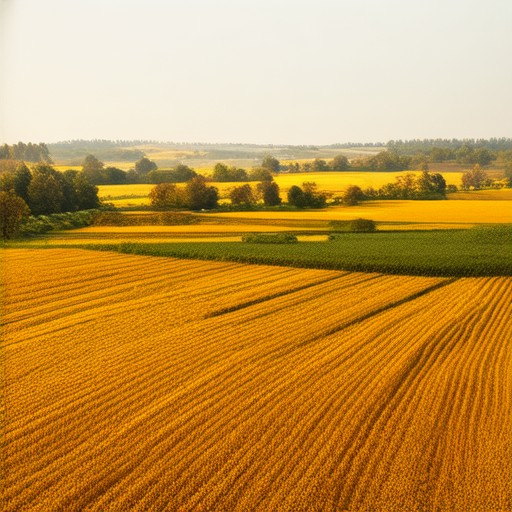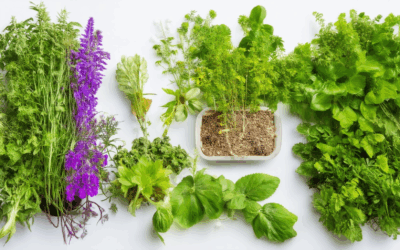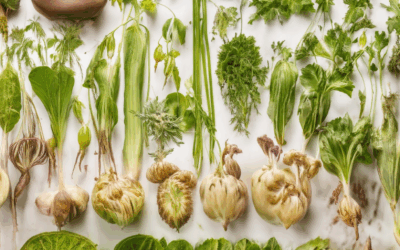Exploring the fascinating journey of growing historical crops through the ages offers a unique glimpse into humanity’s enduring connection with the land. From the prehistoric era to the medieval times, ancient farming techniques shaped civilizations and laid the foundation for modern agriculture. This article delves into the evolution of farming practices, examining how historical methods influenced crop cultivation and sustainable land management. By uncovering the secrets of historical farming techniques, we reveal the wisdom of our ancestors and their impact on today’s agricultural practices. Join us as we traverse the timeline of farming history, exploring the crops that once thrived and the methods that sustained early societies.
Key Takeaways
– Crops: Farmers relied on diverse crops like cotton, corn, wheat, potatoes, clover, tobacco, sugar cane, indigo, rice, hemp, and peanuts, which were central to the agrarian economy and daily life.
– Techniques: Historical farming techniques included advanced irrigation systems, terraced farming, crop rotation, intercropping, natural fertilization, and plow technology, laying the foundation for modern agriculture.
What Crop Did Humans Cultivate 10,000 Years Ago?
Humans cultivated several key crops approximately 10,000 years ago during the Neolithic era. These crops were foundational to the development of early agrarian societies and supported the growth of settled communities.
- Emmer Wheat : A hardy variety of wheat that was among the earliest domesticated crops, playing a central role in the diet of early civilizations.
- Einkorn Wheat : Another ancient wheat species, known for its resilience and ability to thrive under various growing conditions.
- Barley : Used extensively for brewing beer and as a staple food source, barley was a critical crop due to its high yield and versatility.
- Rye : Cultivated for its ability to grow in cooler climates and for its use in baking and other culinary applications.
- Lentils : A nutrient-dense legume that was essential for providing protein and amino acids, supporting large populations.
- Chickpeas : Known for their ability to fix nitrogen in the soil and their high protein content, chickpeas were a vital part of early diets.
- Flax Seeds : Used for oil production and as a source of dietary fiber, flax played a role in textiles and nutrition.
- Apples : One of the earliest fruit trees to be cultivated, apples were valued for their long storage life and sweet flavor.
- Pears : Similar to apples, pears were cultivated for their ability to be preserved and enjoyed throughout the year.
- Squash : A versatile vegetable that was easily dried and stored, squash was a staple in many early diets.
- Pumpkins : Known for their high nutritional value and ease of cultivation, pumpkins were among the first vegetables to be domesticated.
What Crops Did Medieval Farmers Grow?
Medieval farmers cultivated a diverse array of crops, reflecting the agronomic practices of the time. These crops not only sustained communities but also formed the foundation of local economies and diets.
Grains
The primary crops grown by medieval farmers included:
- Barley: Widely used for brewing beer and baking bread.
- Wheat: Essential for producing flour and pasta.
- Oats: Grown for human consumption and animal feed.
- Rye: Used for bread and malted drinks.
Vegetables
Farmers also grew a variety of vegetables, which were essential for subsistence and nutrition:
- Root vegetables: Including carrots, turnips, and beetroot.
- Leafy greens: Such as spinach, kale, and cabbages.
- Fruit trees: Apples, pears, and cherries were commonly cultivated.
- Berries: Strawberries, raspberries, and blackberries were popular.
Livestock
Alongside crop cultivation, medieval farmers raised livestock, which played a crucial role in their economy and diet:
- Cattle: Used for milk, cheese, and meat production.
- Pigs: Raised for bacon, ham, and other pork products.
- Sheep: Providing wool and milk.
- Goats: Useful for milk and cheese, as well as pack animals.
For more information on medieval agriculture and heirloom gardening practices, visit our Agriculture Section .
Traditional Farming Technique for Crop Growth
The three hot beds method is an ancient technique used to maximize crop yields in limited spaces. This method involves dividing a garden into three distinct zones, each tailored to the growth needs of specific plants.
Steps of the Three Hot Beds System
- Early Spring Crops: Plant cool-season vegetables like spinach, lettuce, and radishes. These crops grow quickly and thrive in cooler temperatures.
- Mid-Spring Crops: Introduce crops that require moderate warmth, such as onions, carrots, and beets. These take a bit longer to mature.
- Late Spring Crops: Focus on warm-season vegetables like tomatoes, peppers, and cucumbers. These need the most heat to grow successfully.
This method ensures that each plant type gets the optimal conditions for growth, leading to higher yields and a longer harvest period. By staggering planting times, gardeners can enjoy a continuous supply of fresh produce throughout the season.
The three hot beds technique is not only efficient but also sustainable. It minimizes the need for synthetic fertilizers and promotes eco-friendly gardening practices. This approach has been passed down through generations, making it a cornerstone of traditional farming methods.
What Crops Did Farmers Grow in the 1800s?
During the 1800s, American farmers cultivated a variety of crops that played significant roles in the nation’s economy and daily life. Here’s a breakdown of the major crops and farming practices of the era:
- Cotton : Cotton was a dominant crop, especially in the Southern states. It became a major cash crop due to its high demand for textiles and its profitability. Cotton plantations relied heavily on enslaved labor to process the crop, which was then shipped nationally and internationally.
- Corn : Corn was a staple crop across much of the country. It was used for human consumption, animal feed, and even distilled into whiskey. Farmers utilized corn in various ways, from growing it for market to feeding their livestock.
- Wheat : Wheat was another critical crop, particularly in the Midwest and West. It was used to make flour and was often stored in granaries for later use. Wheat became a cornerstone of many farm economies.
- Potatoes : Potatoes were widely cultivated and served as a versatile and storable root vegetable. They were a staple in many meals and provided essential nutrients during harsh winters.
- Clover and Timothy Grass : These forage crops were essential for raising cattle and sheep. Farmers grew them specifically to feed their livestock, which was vital for both food production and trade.
- Tobacco : Tobacco was a major crop in regions like Virginia and Maryland. It was a highly profitable crop, often exported, and contributed significantly to the agrarian economy.
- Sugar Cane : Sugar cane was grown in the Southern states, where it was processed into sugar and molasses. This crop supported the region’s sugar refining industry.
- Indigo Plants : Cultivated in the Lowcountry, indigo plants were used to produce a blue dye that became popular in fashion and household goods before falling out of favor later in the century.
- Rice : Rice was a significant crop in the Carolinas, particularly along the coast, and became a major export commodity.
- Hemp : Hemp was grown for its strong fibers, which were used in ropes, clothing, and other goods. It played a role in the regional economy and was sometimes used as a substitute for other materials.
- Peanuts : Peanuts began to gain prominence toward the end of the 1800s, particularly in the Southeast. They were a valuable cash crop and a nutritious source of protein.
- Dairy Products : Cows were commonly raised on farms, and their milk was used to produce butter and cheese. Dairy products were essential for food and trade.
These crops and farming practices shaped the agrarian economy of the 1800s, reflecting the diverse needs of different regions and the evolving demands of national markets.
Historical Techniques for Growing Crops
The history of agriculture is marked by innovative techniques that have shaped modern farming practices. Here are some historical methods used to grow crops:
- Irrigation Systems : Early civilizations like the Babylonians and Egyptians developed advanced irrigation methods. The Babylonians used canals and dikes to control water flow, while the Egyptians employed sophisticated systems to manage the Nile’s annual flooding.
- Terraced Farming : The Incas in Peru and the Chinese in regions like Yunnan Province utilized terraced fields to maximize crop production on hilly slopes, reducing soil erosion and enhancing water retention.
- Crop Rotation : The Romans practiced crop rotation, alternating between legumes and cereals to maintain soil fertility and prevent depletion. This method has since been adopted globally.
- Intercropping : Historically, farmers intercropped plants like beans with corn to improve pest resistance and nutrient cycling, maximizing land use and increasing yields.
- Natural Fertilization : Ancient farmers used manure and ashes as fertilizers. These organic methods improved soil health and crop productivity without synthetic inputs.
- Plow Technology : The Sumerians invented the plow, which was later refined by other cultures. Oxen-drawn plows significantly increased agricultural productivity compared to manual tools.
These techniques not only sustained early societies but also laid the foundation for modern farming practices, emphasizing sustainability and efficiency.
Historical Techniques for Growing Crops
The earliest humans employed various ingenious techniques to grow crops, enabling the development of agriculture and civilization. Here are some notable historical methods:
Irrigation Systems
Early civilizations like the Babylonians and Assyrians utilized advanced irrigation systems. They constructed canals and water channels to distribute water to their fields, particularly in arid regions. The Egyptians, relying on the Nile River, used floodwater to irrigate their lands, creating fertile deltas.
Terraced Agriculture
Terraced agriculture was practiced by the Chinese, Inca, and other cultures. This method involved creating stepped plots along hillsides, allowing water to flow efficiently and prevent soil erosion. The Chinese also developed paddy fields for rice cultivation, utilizing water management techniques to sustain crop growth.
Companion Planting
Historically, farmers understood the benefits of companion planting, where plants were grown alongside each other to maximize resource use. The Greeks and Romans practiced this, interspersing vegetables and herbs around their homes to create a self-sufficient kitchen garden.
Crop Rotation
Crop rotation was a cornerstone of sustainable farming practices. The Babylonians rotated crops to maintain soil fertility, and this method was later adopted by many civilizations. It helps prevent soil degradation and pest infestation, ensuring long-term agricultural productivity.
Manuring
Animal manure was widely used as fertilizer in ancient times. The Chinese, for instance, utilized oxen for plowing and then applied their waste as fertilizer. This practice contributed significantly to crop yields and soil health, though modern farmers now rely more on synthetic fertilizers.
Agroforestry
Agroforestry, combining trees with crops and livestock, was practiced by various cultures. The Zoroastrians in Persia and the Mayans in Mesoamerica integrated trees into their farming systems, enhancing biodiversity and soil structure.
Chinampas
In Mesoamerica, the Aztecs and Mayans built chinampas, elevated garden beds on lake surfaces. These gardens were fed by water from nearby lakes, allowing them to grow crops like squash and beans in wet conditions.
Ziggurat Platforms
The Sumerians built ziggurats, large platforms for temples, which were used to elevate crops above floodwaters. These structures protected crops from flooding while also providing a stable base for growth.
Flood-Based Irrigation
Egyptian agriculture relied heavily on the annual flooding of the Nile River. Farmers used the silt deposits left behind by the floodwaters to enrich their soil, ensuring bountiful harvests year after year.
Crop Diversification
Historically, farmers grew a variety of crops to ensure food security. This approach, combined with techniques like crop rotation, allowed ecosystems to recover and supported sustainable farming practices over centuries.
Sustainable Practices
Many ancient farming techniques were inherently sustainable. Methods like crop rotation, companion planting, and agroforestry not only supported crop growth but also maintained ecosystem balance and prevented environmental degradation.
Conclusion
These historical techniques demonstrate the ingenuity and adaptability of early farmers. From sophisticated irrigation systems to innovative farming methods, their efforts laid the foundation for modern agriculture. By studying and applying these timeless practices, we can continue to enhance our farming techniques and ensure the sustainability of our food production systems.








0 Comments